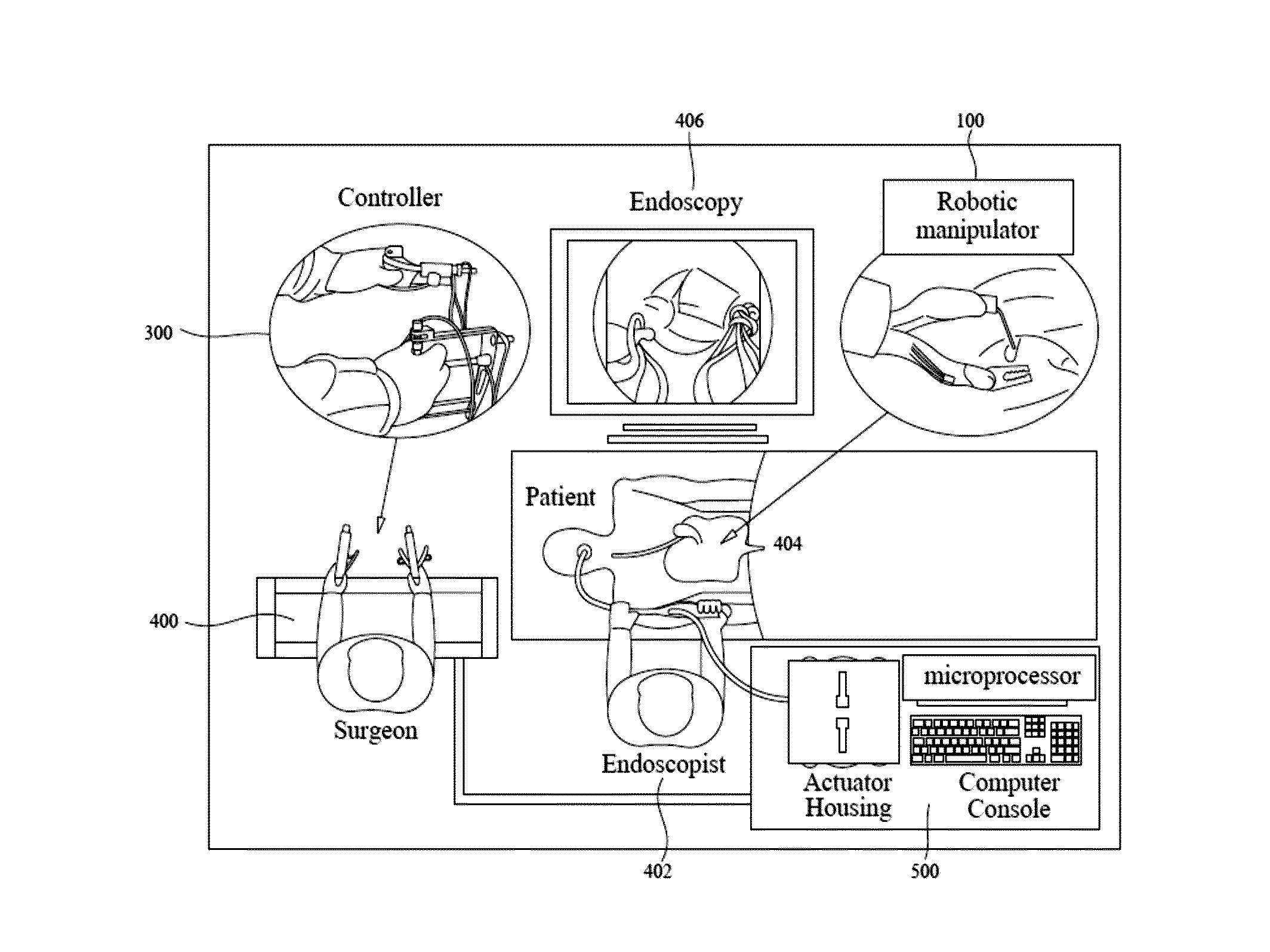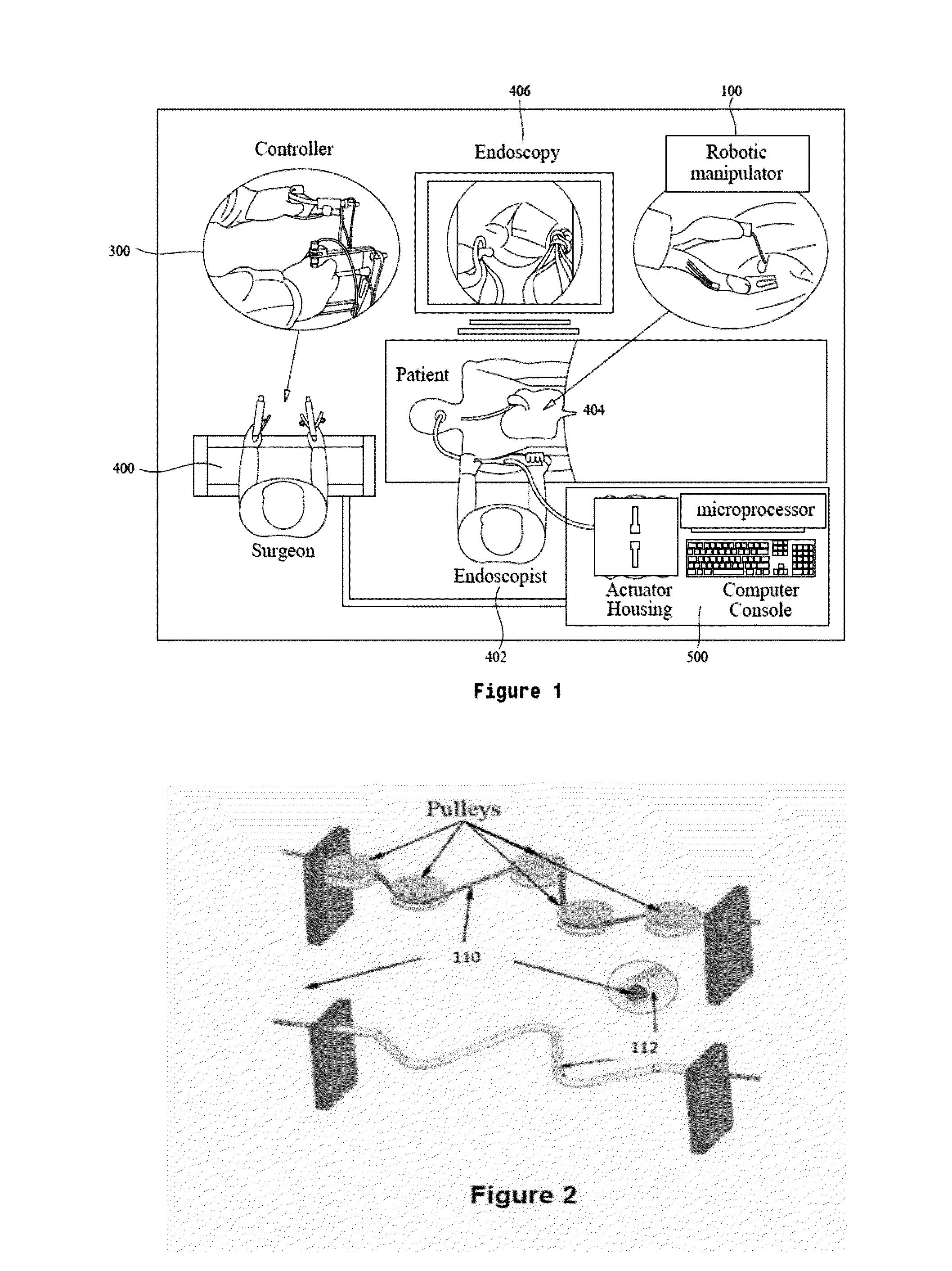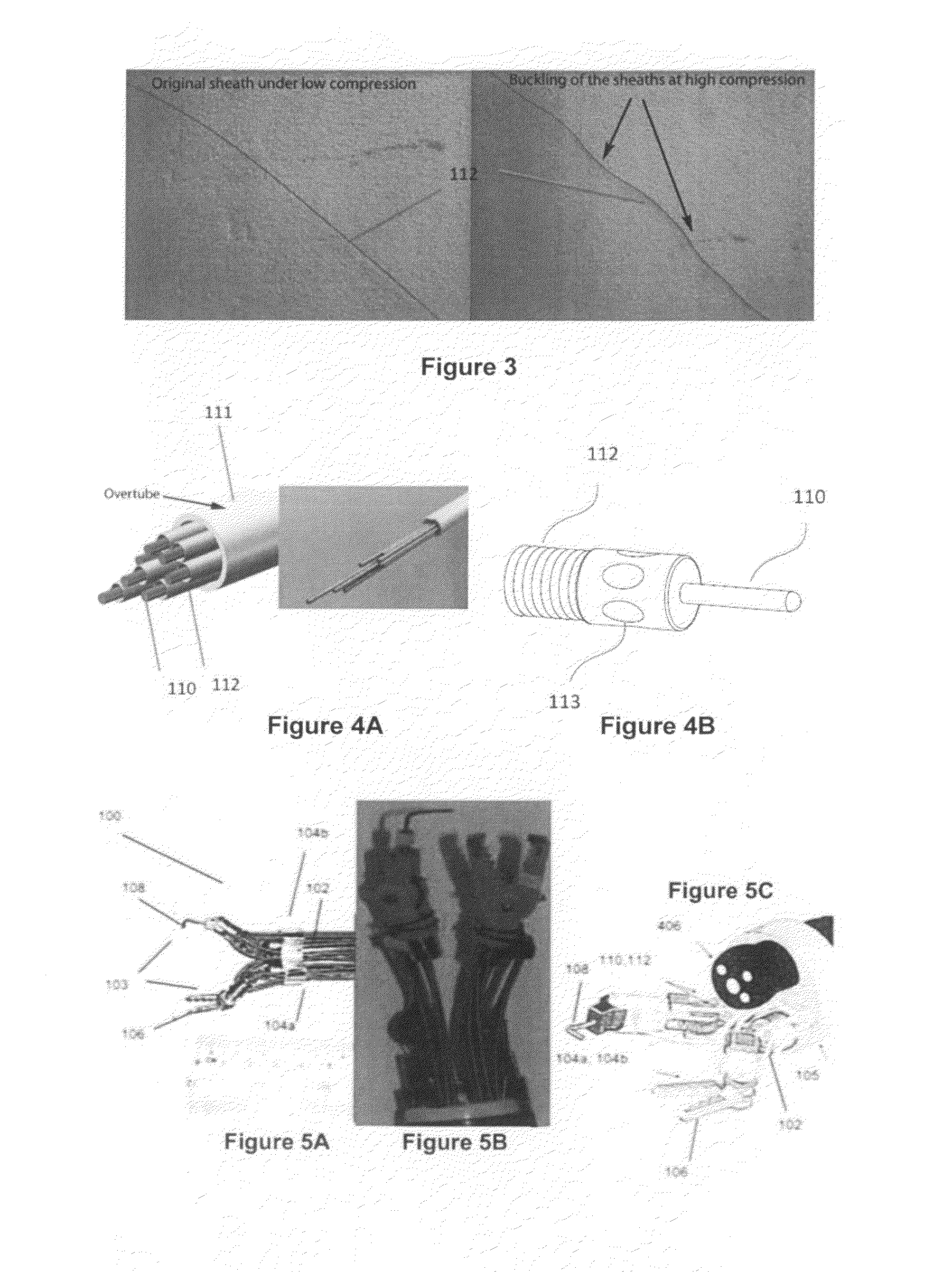Robotic system for flexible endoscopy
- Summary
- Abstract
- Description
- Claims
- Application Information
AI Technical Summary
Benefits of technology
Problems solved by technology
Method used
Image
Examples
example 1
[0126]Each ESD in live animal was repeated using the conventional endoscope. The main outcome measures were: (i) time required to complete the submucosal dissection of the entire lesion, (ii) dissection efficacy, (iii) completeness of the excision of the lesion, and (iv) presence or absence of perforation of the wall of the stomach.
[0127]Submucosal dissection time was defined as the time from activation of the endoscopic dissecting instrument to completion of excision of the entire lesion. Assessment of dissection efficacy was based on scoring of efficiency of two related task components—grasping and cutting of tissue—on a graded structured scale from 0 to 2, where the lowest grade, “0” means failure to grasp / cut and the highest grade “2” means a most efficient grasp / cut. Similarly, the completeness of the lesion excision is rated on a scale of 0 to 3, where “0” means failure to excise and “3” means a complete excision of the targeted lesion in one single piece. The details of the s...
example 2
[0141]Before the experiment was performed on living animals, MASTER was first tested on explanted porcine's stomach. The main objective of the ex vivo experiment was to test the capability of the system in grasping and cutting performance. The grippers must provide enough force for grasping along with manipulating the tissue while the hook must be able to perform the cut at the desired site of the tissue. The test also establishes the teamwork and the cooperation between the endoscopist who has more than 20 years of clinical experience and the surgeon who controls the controller with less than 5 years of experience. With 15 times of training with explanted tissues, the result showed the feasibility of the system before being conducted in real animal.
[0142]The liver wedge resection procedure was chosen to test the feasibility of the system to perform NOTES. The in vivo test was performed at the Advance Surgical Training Center, National University Hospital in Singapore with the help ...
example 3
[0145]In order to have a successful application of MASTER in NOTES, ESD was done. With the robotic manipulator, intensive experiments were conducted to verify the feasibility of the robotic system. Together with the help of experienced endoscopists, 15 ex vivo ESDs, 5 in vivo ESDs and 2 in vivo NOTES had been performed successfully on pigs. Before the trials, practice sessions with ex vivo pigs' stomachs were conducted with the surgeon to establish the necessary steps for the ESD and NOTES. It also enabled the endoscopists to understand the capability and limitation from the endoscope and the robot.
[0146]Since the prototype is used only on animals, the robots are tentatively just cleaned thoroughly with soap, water and brush and subsequently reused for further trials. In future the robotic manipulator could be designed to be disposable after a single use to ensure it is sterilized effective for human patients.
ESD with MASTER
[0147]The finalized steps for robotic ESD are given as foll...
PUM
 Login to View More
Login to View More Abstract
Description
Claims
Application Information
 Login to View More
Login to View More - R&D
- Intellectual Property
- Life Sciences
- Materials
- Tech Scout
- Unparalleled Data Quality
- Higher Quality Content
- 60% Fewer Hallucinations
Browse by: Latest US Patents, China's latest patents, Technical Efficacy Thesaurus, Application Domain, Technology Topic, Popular Technical Reports.
© 2025 PatSnap. All rights reserved.Legal|Privacy policy|Modern Slavery Act Transparency Statement|Sitemap|About US| Contact US: help@patsnap.com



